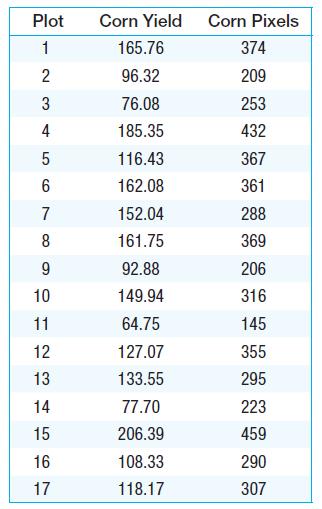For positive random variables X and Y, suppose the expected value of Y given X is E(Y|X)
Question:
For positive random variables X and Y, suppose the expected value of Y given X is E(Y|X) = θX. The unknown parameter u shows how the expected value of Y changes with X.
(i) Define the random variable Z = Y/X. Show that E(Z) = θ.
(ii) Use part (i) to prove that the estimator W1 = n–1Σni=1 (Yi/Xi) is unbiased for θ, where {(Xi, Yi): i = 1, 2, . . . , n6 is a random sample.
(iii) Explain why the estimator W2 = Y̅/X̅, where the overbars denote sample averages, is not the same as W1. Nevertheless, show that W2 is also unbiased for θ.
(iv) The following table contains data on corn yields for several counties in Iowa. The USDA predicts the number of hectares of corn in each county based on satellite photos. Researchers count the number of “pixels” of corn in the satellite picture (as opposed to, for example, the number of pixels of soybeans or of uncultivated land) and use these to predict the actual number of hectares. To develop a prediction equation to be used for counties in general, the USDA surveyed farmers in selected counties to obtain corn yields in hectares. Let Yi = corn yield in county i and let Xi = number of corn pixels in the satellite picture for county i. There are n = 17 observations for eight counties. Use this sample to compute the estimates of u devised in parts (ii) and (iii). Are the estimates similar?

Step by Step Answer:

Introductory Econometrics A Modern Approach
ISBN: 9781337558860
7th Edition
Authors: Jeffrey Wooldridge





